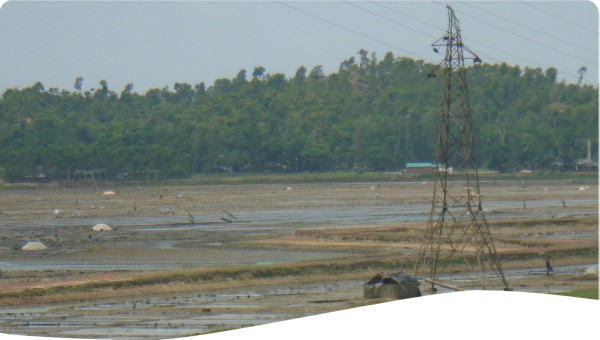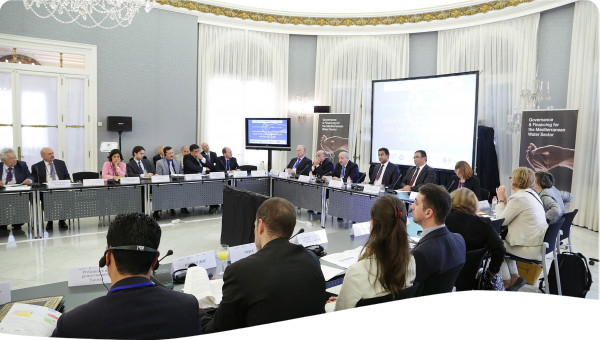The Lake Atitlán basin experiences serious problems of water pollution, soil erosion and forest and biodiversity losses. Action was taken to establish the Authority for Sustainable Management of the Atitlán Basin. However, barriers such as lack of public participation, institutional coordination and investment funds have only ensured limited success. The key lesson learnt is that main barriers to an integrated management of water resources in the basin are strongly interlinked.
The Lake Atitlán basin is a closed watershed located in the volcanic highlands of Guatemala, Central America with competing uses and serious problems of water pollution, soil erosion and forest and biodiversity losses. The main rivers flow into the lake in the Northern side, more to the South a number of seasonal streams flow into the lake in the wet season. The population in the basin is 180,000 inhabitants; 91% are of indigenous Mayan origin; 60% of the people live less than 3 km of the lake. The alluvial soils in the higher and middle parts of the basin are intensively used for agriculture, crops include beans, horticulture, coffee and fruits. The lower part is used for similar crops, but agriculture is less intensive on these younger soils.
The main environmental problems in the basin are (a) water contamination due to untreated municipal wastewater and coffee benefice, agrochemical runoff, and soils erosion, (b) soil losses due to inadequate agricultural practices, and (c) forest and biodiversity losses due to land use changes for agriculture and cutting of fire wood. Contamination by domestic wastewater is high in the lake. Besides this, there are plenty of conflicts about water use between upstream and downstream user communities. No water use allocation system exists, and regulation that exists is not enforced.
In 1996 the Authority for the Sustainable Management of the Atitlán Basin (AMSCLAE) was established to plan, co-ordinate and implement measures and actions of the public and private sector that are deemed necessary to conserve the ecosystem of Lake Atitlán and its Basin. AMSCLAE produced a Master Plan for the basin in 2000, based on a technical study prepared by National Commission for Protected Areas (CONAP) in 1994. The Plan divided the basin into zones and provided an integrated framework for investments and projects to be carried out by a number of actors. It was based on the principles of Integrated Water Resources Management (IWRM). The Plan includes the following measures:
- Establishment of municipal Natural Resources Committees to support priority actions.
- Treatment of wastewater from domestic sources and coffee production, and measures to collect and treat solid waste.
- Scale up of soil conservation and organic agriculture measures, and regulation of the use of chemicals.
- Development of tourism, especially ecotourism.
- Reforestation with native and mixed forests.
- Soil productivity projects involving local land users.
- Consolidation of protected areas managed by local groups, in association with government agencies, NGOs and the private sector.
- Conservation of aquatic species.
- Better regulation and more effective enforcement for construction and contamination.
A number of local organizations and stakeholders participated in the elaboration of the Master Plan through a series of meetings – more than fifteen in one year. However, the plan is still under revision; only a few measures are being undertaken, in a fragmented manner. Thus, so far, the impact of any water resources management measures taken in the Lake Atitlán basin has been limited.The main barriers to success are the lack of public participation, institutional coordination, investment funds and funding for AMSCLAE. Legislation establishing AMSCLAE failed to specify a source for funding its operations. The major beneficiaries of the lake (e.g. hotels and wealthy homeowners) contribute nothing to lake conservation costs.
The Master Plan itself is controversial, which had delayed approval. Review by government agencies suggests that some projects have been inappropriately assigned to agencies without the proper implementation mandate. There is no overall coordination among relevant agencies, most of which are hampered by inadequate financial resources and are staffed with technical people, rather than decision-makers.
Low public awareness means that democratically elected decision-makers do not make it a priority. Water resources management is not a prime election issue; none of the candidates for mayors in recent elections campaigned on environmental issues.
Lack of political will results in low investments. Lack of coordination makes public awareness campaigns harder to implement. Lack of investments makes institutions and coordination mechanisms weak.
 Case studies
Case studies

